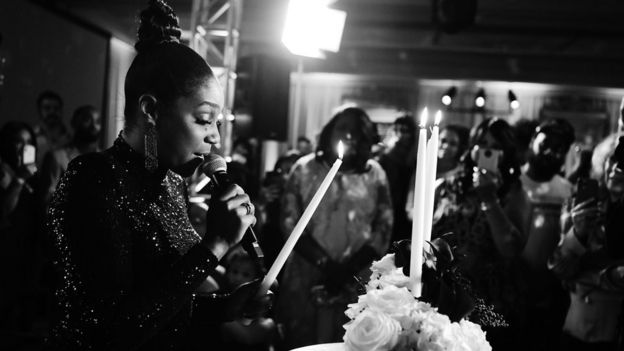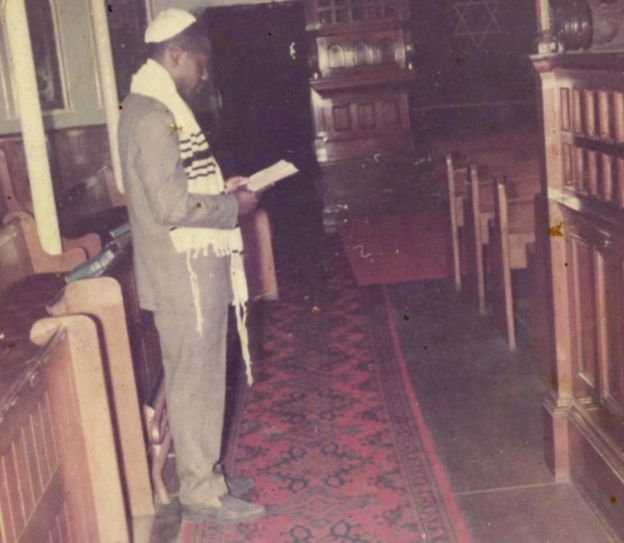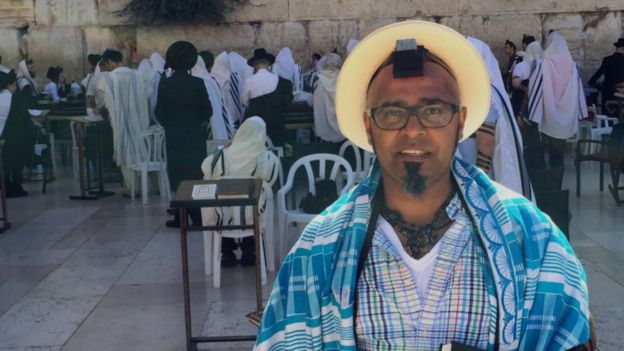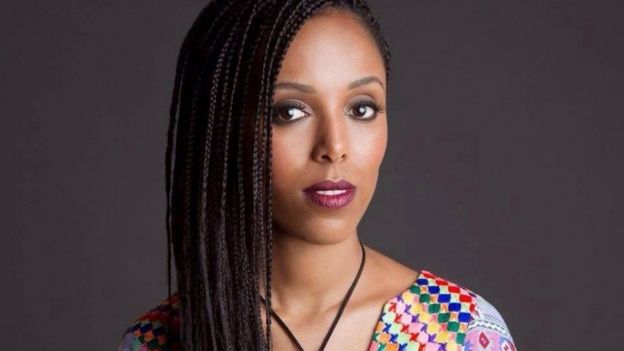The Eritrean-American comedian Tiffany Haddish has celebrated her Bat Mitzvah.
The Jewish coming-of-age ceremony – normally marked when a girl turns 12 – signifies a stepping into religious maturity, and a commitment to keep the commandments of the Torah, the first five books of the Bible containing the foundations of Jewish law.
It was held on the same day as both her 40th birthday and the release of her Netflix comedy special Black Mitzvah, in which she pays tribute to her Jewish heritage.
Her journey reflects the experience of many black Jews who have either rediscovered their roots or felt a strong spiritual attraction to Judaism.
Haddish first met her Eritrean Jewish father at the age of 27.

But it was when she took a DNA test confirming her Jewish ancestry that she really began reconnecting with the faith.
She started taking Hebrew lessons and studying the Torah, and has said her Bat Mitzvah was a way to honour her African Jewish ancestors.
Haddish has said that she hopes sharing her experience will encourage other African-Americans to connect with their roots.
Exactly how many people could be included in this journey is very hard to establish.
That is in part because there are differing definitions of what actually makes someone Jewish.
‘Many ways of being a Jew’
Traditionally, Judaism is passed through the maternal line, but some see that having one Jewish grandparent is enough to establish a connection with the religion. While there are others who self-identify as Jewish.
Calculating the number of Jews in Africa is impossible, according to Dr Edith Bruder author of The Black Jews of Africa.
“These are communities that are fluid,” she told the BBC. “There are so many ways of being a Jew in Africa.”
The biggest community by far is in South Africa and is largely made up of people whose families migrated from Europe.
Ethiopian Jews, known as Beta Israel, existed in obscurity for centuries but were only recognised by the Israeli state as Jewish as recently as 1975. The vast majority of this roughly 40,000-strong community was spirited to Israel in a series of top secret operations between the end of the 1970s and 1991.
But there are smaller communities across the continent, which have different origins, and different levels of formal recognition.
As a consequence, the stories of black people establishing a connection with Judaism are varied.
Some, like Haddish, may have their ancestry confirmed through genetic testing.
Others, like Michael Lomotey, discovered their rich Jewish heritage in other ways.
He grew up in the city of Hull in north-east England during the 1960s and his family were the only people of colour he knew.

Both his parents were Jewish: his mother was white English and his father was black Ghanaian.
But Mr Lomotey had no idea about his family’s Jewish identity until he was a teenager.
“I just thought that the behaviours that we had in the house were because of our Ghanaian heritage, which we were aware of,” he told the BBC.
‘Light-bulb moment’
He remembers his father wearing a kippah (skullcap), and being taught some Hebrew.
“But it was never talked about. Judaism or Jews were never mentioned to us.”
Mr Lomotey is not sure why his parents never spoke specifically about Judaism, but when he left home at the age of 18, his father gave him a copy of the Torah.
“I just delved into it and I thought: ‘This is where everything comes from.’ It was like a light-bulb moment.”
He says that was the beginning of a “wonderful” journey of discovery, which has seen him worshiping with a broad spectrum of Jewish communities, from Liberal to the ultra-Orthodox Haredi Jews.

“I worked with some guys from the Haredi community and I’d go to shul [synagogue] with them a couple of times. They were a really interesting, really dynamic set of people.”
Mr Lomotey and his family now attend a Liberal synagogue in North London.
He says what drew him to it was that “there was a whole mix of people there – it was really diverse. There [are] black Jews there, Asian Jews, white British people”.
Mr Lomotey is delighted to hear about Haddish reclaiming her Jewish roots.
“We’ve got to encourage people taking pride in their heritage,” he says.
“She’s embraced it publicly, and we’ve got to be proud of that.”
Becoming Jewish
There are other people who establish their Jewish identity through a different route.
For many, converting is an incredibly intimate and private experience, and so it is difficult to say how many people around the world choose to do this.
But someone who did was Beza Abebe.
She was born in Ethiopia to a secular family, but when she was introduced to Judaism by her now ex-boyfriend, she began a journey that would see her move to Israel to study the religion, and eventually convert.
The process was not easy. First, she had to study Hebrew for around six months just to be able to read and understand the prayers and religious texts.

“[In all] it took me almost four years. It was a very complicated process. But I managed because so many people helped and really saw how committed I was,” she says.
When people questioned why she was willing to go through such a difficult process, Ms Abebe would explain that “your soul is born Jewish. Even if you convert or you come to it on some kind of journey… somehow you will discover it”.
In other words, your soul knows who you are, and where you belong, and will find a way to get you there.
The news of Haddish’s Bat Mitzvah has been met with congratulations from Jewish people of different backgrounds around the world.
Writer and filmmaker Rebecca Pierce wrote on Twitter that “your Bat Mitzvah and public embrace of your Jewish heritage means so much for Black Jews everywhere”.
And Haddish’s friend Barbara Streisand simply said “mazel tov [congratulations] on your Bat Mitzvah!”
Ms Abebe too joined in the congratulations: “It really warms my heart to see someone search and seek her heritage and embrace it.
“She adds colour and an interesting perspective to the Jewish world, especially to the American Jewish community. I watched her special and I love it! She is special,” she told the BBC.
Credit: Source Link